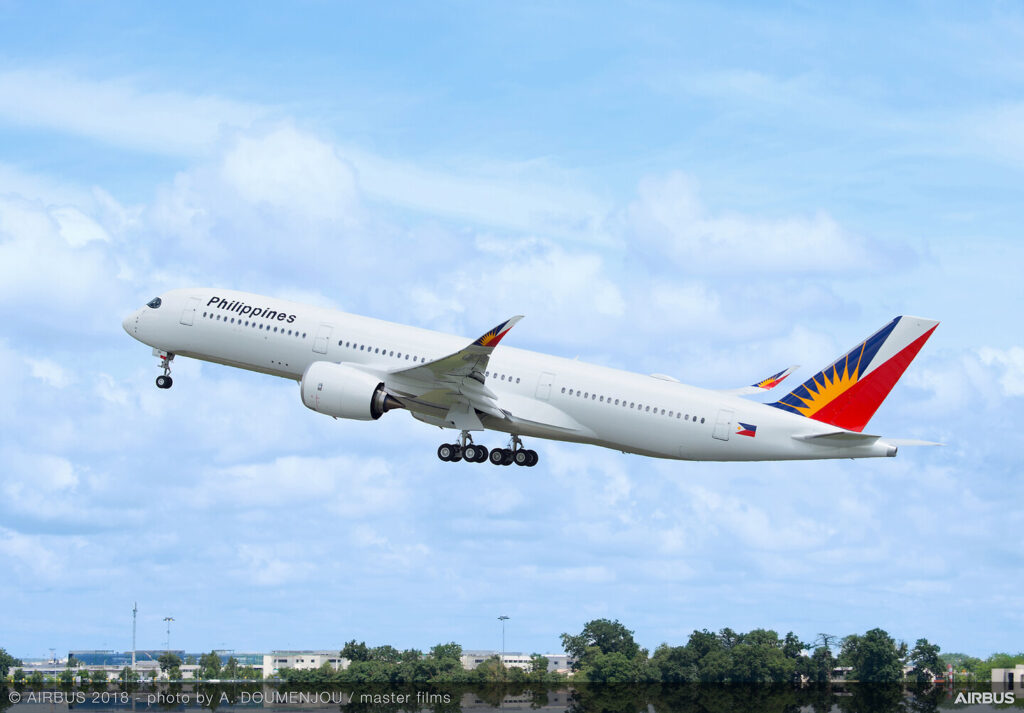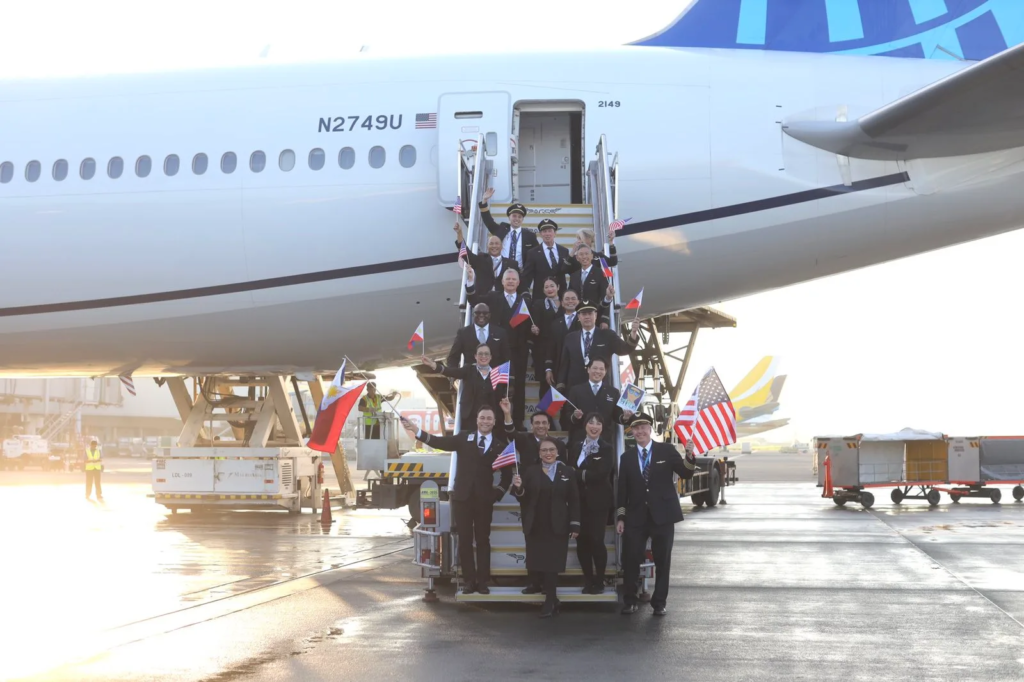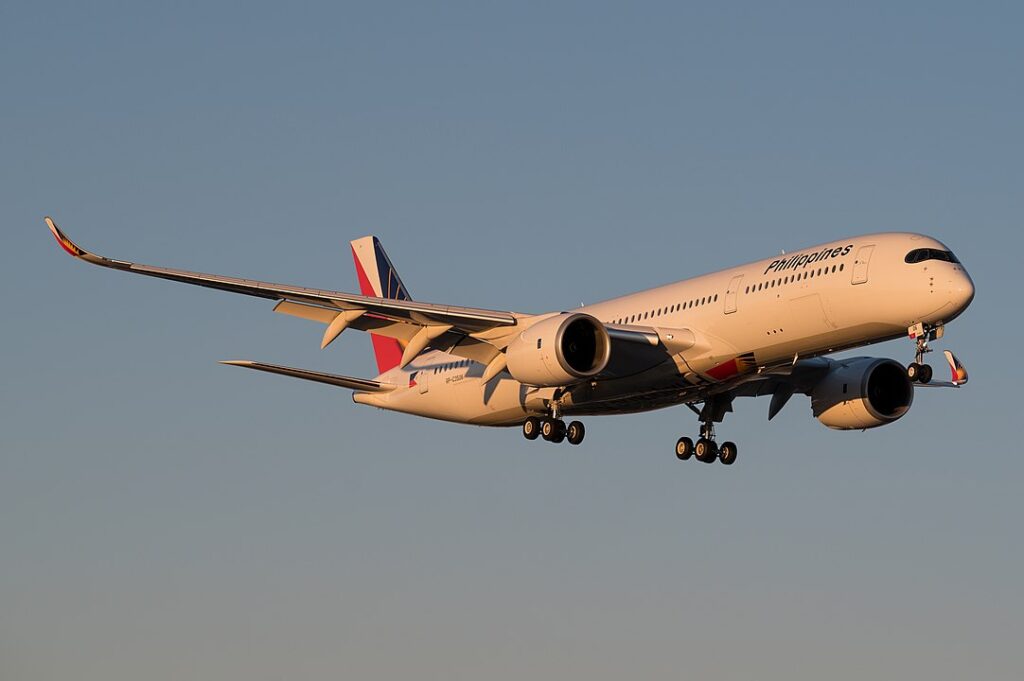MANILA- Philippine Airlines (PAL) plans to expand its US flights operation starting next year (2025), capitalizing on its successful West Coast services.
PAL Vice President for Sales Bud Britanico told reporters that the airline aims to reclaim its market share for North American flights.

Philippine Airlines US Flights
The expansion hinges on the delivery of nine Airbus A350-1000 widebody aircraft. PAL is evaluating potential new destinations, including Illinois and Texas, which host significant Filipino populations. Census data reveals approximately 200,000 Filipinos in Texas and 160,000 in Illinois.
Nevada, particularly Las Vegas (LAS), remains a consideration for PAL. The state is home to about 170,000 Filipinos, many employed in the casino industry. PAL previously operated flights to Las Vegas until 2012, when it restructured its network.
Britanico identified Chicago, Houston, and Las Vegas as potential new hubs for Illinois, Texas, and Nevada routes, respectively. However, he emphasized that thorough analysis and additional aircraft are prerequisites for these expansions.
Las Vegas holds particular interest for PAL. The airline previously served the city via Vancouver with fifth freedom traffic rights but discontinued the route due to the inefficiency of its Airbus A340-300 aircraft on this route.

Competition from US Carriers
Philippine Airlines (PAL) strives to regain its market dominance in transpacific flights from the Philippines. The airline faces increasing competition, notably from United Airlines (UA), which began direct US flights in 2023.
PAL’s market share for US and Canada flights dropped to 47 percent in 2023 from 65 percent in 2022. To counter this decline, PAL aims to increase flight capacity and expand route options, offering travelers greater flexibility.
The airline launched non-stop Manila-Seattle flights, establishing the only direct service from the Philippines to the American Midwest. This new route, operational since this month (October 2024), marks PAL’s initial step towards reclaiming its North American market share.
Further, the Seattle flights are performing well, with PAL reporting 80 to 90 percent load factors. This indicates strong demand, with at least four out of five seats booked on each flight.
Beyond leisure travel, PAL seeks to foster business connections between the Philippines and the US through its Seattle route. The city hosts major multinational corporations including Amazon, Boeing, Microsoft, and Starbucks, presenting opportunities for increased business travel and economic ties.

Market Data
Philippine Airlines (PAL) faces significant opportunities for expansion in underserved North American markets. Data reveals Calgary as the top unserved route with 129,000 potential passengers, followed by Chicago (87,000) and Houston (85,000).
Route expert Behramjee Ghadially suggests Las Vegas (LAS) as PAL’s optimal next U.S. destination. LAS offers several advantages:
- PAL’s Airbus A350-1000 and Boeing 777-300ER aircraft can operate the route at full payload in both directions.
- LAS provides extensive interlining opportunities with major U.S. carriers.
- The flight time to LAS is shorter compared to Chicago (ORD) and Houston (IAH), reducing operational risks.
Ghadially recommends a thrice-weekly service to LAS initially. He also proposes PAL pursue a codeshare or interline agreement with Southwest Airlines (WN), following Icelandair’s (FI) model. This partnership could benefit PAL in several ways:
- Southwest’s strong presence in LAS would provide significant feed to PAL’s flights.
- Southwest’s free two-piece baggage allowance aligns well with the U.S.-Manila market’s needs.
- The partnership could enhance connections to PAL’s existing Los Angeles, San Francisco, and Seattle services.
- Southwest offers multiple daily nonstop flights from LAS to major U.S. cities, expanding PAL’s reach.
While Chicago and Houston present larger markets, their longer flight times may result in payload restrictions for PAL’s aircraft, especially during winter operations to Manila.
The LAS strategy offers a lower-risk approach to expanding PAL’s U.S. network while maximizing connection opportunities through strategic partnerships.
Currently, Philippine Airlines has a fleet of 22 widebody aircraft which includes, two Airbus A350-900, 11 A330-300 and nine Boeing 777-300ER. This makes 1/3rd of total fleet PAL operates.
Stay tuned with us. Further, follow us on social media for the latest updates.
Join us on Telegram Group for the Latest Aviation Updates. Subsequently, follow us on Google News

